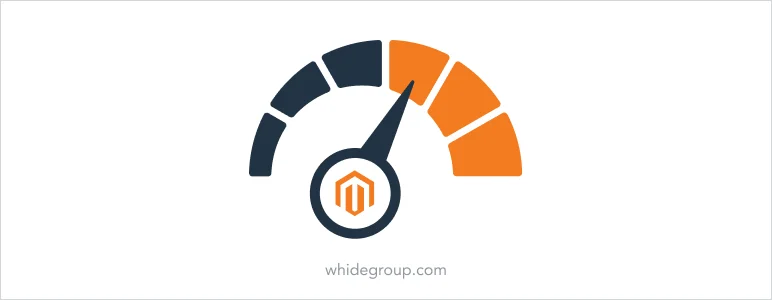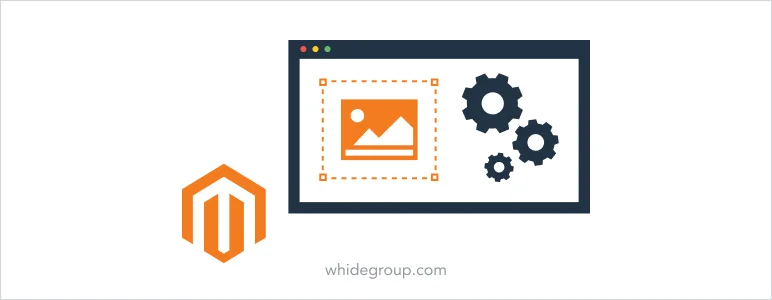Elevate Your Store's Performance:
Top Magento Conversion Optimization Tips for 2024

Elevate Your Store's Performance:
Top Magento Conversion Optimization Tips for 2024
Share post
What is the difference between the online stores that easily turn visitors into their customers and those with low sales? Not only should your ecommerce solution have a modern design and visually rich product pages. The real game-changer of your store’s performance is Magento conversion rate optimization (CRO).
But what are its main goals? How to make your website get more customers?
In this post, you will find out:
Table of Contents
ToggleConversion Rate Optimization is a complex of measures used to increase the number of website visitors who successfully complete a desired action. Since we are talking here about ecommerce, the desired action is purchase. Magento conversion optimization involves studying how users interact with your site, what they do, and what prevents them from completing a purchase. There is no universal conversion rate optimization strategy – different ecommerce websites require diverse approaches.
The start point of your conversion rate optimization measures should be a deep analysis of your current website performance. This means you will need to find all the strengths and weaknesses of your online store. There are some indicators that can help you cope with this task easier. For example, you can determine your bounce rates, average order value, and cart abandonment rates. These are basic indicators to begin your analysis with, but the more parameters you use and calculate, the clearer results you will get.
How can you perform this analysis? You can use either built-in Magento tools or Google Analytics to gain insights into customer behavior, identify high-performing and underperforming pages, find bugs and minor website issues, and learn more about the weak points of your ecommerce solution.

CRO is crucial for Magento stores because it directly impacts their ability to turn visitors into customers. In other words, it can drive your sales and profitability. Here are a few key reasons why Magento conversion rate optimization is so important:
Monitoring the right metrics is crucial for analyzing the performance of your Magento store. Here are the key metrics that are common for most Magento conversion rate optimization strategies:
There are dozens of other parameters and indicators you need to calculate that can help you optimize your Magento store. For example, returning visitor rate, average order value, traffic sources, customer acquisition cost, customer satisfaction and feedback. These metrics can help you gain a comprehensive understanding of your Magento store’s performance, identify areas for improvement, and make data-driven decisions to optimize your conversion rates and overall user experience.
Before you start making any improvements, it is necessary to analyze the current condition of your ecommerce store and conduct your Magento store conversion rate audit.
Conduct a CRO audit
A comprehensive conversion rate optimization audit will allow you to identify the barriers that have a negative impact on your store’s conversion. This means you will detect the issues that worsen your website performance and make customers leave without making purchases.
At this stage, you will need to review user experience, website design, content quality, and technical performance. It is important to evaluate the usability of your site and check out navigation, page load times, and mobile responsiveness. After that, it will be good to check the effectiveness of your product pages, including the quality of images, descriptions, and calls to action. Don’t forget to examine your checkout process to identify any friction points that could lead to Magento cart abandonment.

Contact Reliable Magento Development Company
Use top Magento tools and techniques for analysis
Utilizing the right tools and techniques is crucial for effective analysis and optimization of your Magento store. Tools like Google Analytics, Hotjar, and Crazy Egg can provide you with valuable data on user behavior, heatmaps, and session recordings. Magento’s built-in analytics offers detailed reports on sales performance, customer behavior, and product popularity. Additionally, A/B testing tools like Optimizely and VWO will allow you to test different versions of your web pages and determine which performs better.
User Experience is one of the key factors that has a high impact on your conversion rate. Your ecommerce store should have a smooth, bug-free, and understandable performance. Moreover, meeting industry and web development standards is also crucial. To increase conversions, pay attention to navigation functions, page load speed, and make sure your website is mobile-friendly.
When visiting your website, your potential customer should have an opportunity to find everything needed in a few clicks. Make sure your products are organized logically, grouped properly, and placed in the corresponding categories. It is better to have clear labels and double-check whether your search and navigation menus are intuitive. This approach will help you significantly increase conversions.
For more information on how to improve navigation and search, explore our Case Study. We helped our client improve the conversion rate by adding a pop-up for customer-type selection when visitors first entered the website. The reason is that Kjellman operates in the B2B and B2C sectors, so it was necessary to show customers two different prices (with and without VAT). We also added a dropdown in the top navigation bar for the same choice. As a result, the customers had a clear understanding of the prices available on the website.
We also successfully performed a conversion optimization for one of the largest tutoring marketplaces in Australia. Our Magento developers added custom logic to Magento Layered Navigation, expanding the filtering capabilities. This allowed it to include more precise search results and sort classes depending on the user’s location.
For higher conversion, your Magento store must be fully responsive. This means it should perform excellently on different types of mobile devices. For example, each text should be visible without zooming, and the images fit different screen sizes. Most CRO strategies also require regular testing of your Magento 2 website on various devices. This approach will allow you to offer a smooth, efficient, and enjoyable shopping experience for mobile users.
By the way, search engines rate responsive websites better. Therefore, you can not only improve your CRO, but also improve your positions in search engine result pages (SERPs).
Fast page loading speed is one of the keys to successful performance for any website. The reason is that slow-loading pages usually lead to visitors’ frustration and abandonment. The users are very demanding and are not ready to wait for over 3 seconds for a web page to load. The main tasks of Magento performance optimization that improve your site speed include image compression, code minification, and browser caching implementation. Investing in a dedicated Magento hosting service can also help you boost your Magento site’s speed.

The design and content of your product pages are one of the top priorities when developing or improving a Magento site. These pages should represent your products from different angles and give a customer a clear view of its features. Moreover, the product descriptions should be up-to-date and give your potential customers enough information about product characteristics, item availability, price, shipping policies and everything else that they might need to decide whether they should proceed with the purchase.
Images play one of the crucial roles in Magento store design. We helped one of our clients to increase conversion rates by 23% with a set of measures that included image optimization. We had to upload all images and optimize them using one of the conversion rate optimization tools for images, known as Squoosh. This allowed us to make the images fit the required size and weight without loss in quality.

Adding reviews and customer ratings to your website is one of the working conversion rate optimization techniques. Following our Magento 2 migration services for Kjellmann, we created a solution that required integration of a Trustpilot reviews system with the store.

CTAs guide users toward desired actions, such as a purchase or a newsletter signup. Effective CTAs should be prominent, visually distinct, and use compelling language that communicates the benefit of taking action. It is better to use action-oriented words like “Buy Now,” “Sign Up,” or “Learn More” to create a sense of urgency and clarity. Ensure that your CTAs stand out with contrasting colors and sufficient white space around them.
Your customers shouldn’t face any even minor issues when making their steps through the checkout process and purchase. It should be simple, understandable, and straightforward. Therefore, it is important to minimize your checkout steps to improve your conversion rates.
What is more important, it is necessary to propose diverse payment options for your customers. Our development team can add multiple payment options to your website, including the most up-to-date ones. We also develop diverse types of integrations related to finances and payments. For example, we have created cryptocurrency payment gateway integrations for Magento 2 and four other ecommerce platforms.
Customers value personalized approaches when making purchases. If you want to increase your conversion rates, you can follow these tips:
These techniques will help your website visitors feel special. As a result, they will likely start making more purchases on your Magento store.
Testing and improving should be one of your constant and long-term measures. For example, you can regularly use A/B Testing to identify the most converting solutions, keep in touch with industry trends, and implement them fast to make your website visitors fully satisfied with your level of service.
Why is Magento conversion rate optimization important?
Magento conversion optimization is important because it directly impacts your store’s revenue by turning more visitors into customers, enhancing user experience, and maximizing the return on your marketing investments.
What is the average conversion rate for a Magento store?
The average conversion rate for a Magento store typically ranges between 1% and 3%, but this can vary based on industry, target audience, and optimization efforts.
How to discover the required fields for CRO on my Magento site?
To discover the required fields for CRO, conduct a comprehensive audit, analyze customer behavior, and gather direct user feedback through surveys and usability testing.
What are the most budget-friendly ways to optimize my Magento conversion rates?
Budget-friendly ways to optimize your Magento conversion rates include improving site speed, optimizing product descriptions and images, utilizing social proof like reviews, simplifying the checkout process, and leveraging free analytics tools to gather insights.
What tools and plugins can I use for optimization?
You can use tools and plugins like Google Analytics, Hotjar, Crazy Egg, Optimizely, and Magento extensions like Amasty’s Advanced SEO Suite and Aheadworks’ One Step Checkout.
Magento conversion rate optimization requires diverse approaches depending on your website niche, its current performance, theme, integrations, and other features. Moreover, if you use downloadable templates to build your website, they might contain hidden bugs and imperfections that slow down your ecommerce store, worsen user experience, and may often lead to lower customer satisfaction.
If you want to improve your website functionality, performance, and speed and make a better overall customer impression, feel free to Contact us.
Share This Article

 Top Magento Ecommerce Design Tips for 2025: Best Practices for a Successful...
Top Magento Ecommerce Design Tips for 2025: Best Practices for a Successful...